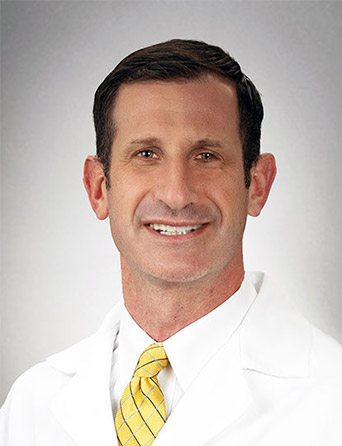Join Our eNewsletter!
Subscribe to our monthly newsletter to receive encouraging advice to help you lead a healthy lifestyle.

Men Tune Up Your Vital Engines
When it comes to men's health, most guys pay more attention to their car. In fact, men visit doctors 28% less often than women.
This isn't such a good idea. According to U.S. life insurance statistics, the average woman lives to age 79 – six years longer than men who, on average, use more tobacco products, consume more alcohol, make poorer food choices, and take more risks when driving.
John Colen, MD, a board-certified urologist at Kelsey-Seybold Clinic, offers a brief overview of three prevalent men's medical issues and the best ways to avoid medical “potholes” for the long haul along the road to health.
Cardiovascular Disease (CVD)
Cardiovascular disease is the leading cause of death for U.S. adults, accounting for about one-third of deaths for people over 35 – with the death rate inordinately higher for men.
Hazard: High blood pressure, bad cholesterol levels, or a family history of heart problems
What to do:
- Get annual physical exams.
- Know your cholesterol levels.
- Don’t smoke.
- If you drink alcohol, drink in moderation.
- Eat more fruit, vegetables, and high-fiber foods.
- Avoid saturated fats.
- Exercise 30 minutes three to five times a week.
Diabetes
Type 2 diabetes leads to high glucose (sugar) levels in your blood.
Hazard: Family history of diabetes, lack of regular exercise, and being overweight or obese. Symptoms can include frequent urination, unusual thirst, erratic mood swings, extreme hunger, and fatigue.
What to do:
- Have your blood glucose level tested if exhibiting warning signs.
- Maintain a healthy weight range for your height and body type.
- Eat healthy, high-fiber foods.
- Exercise regularly.
- Consume alcohol in moderation.
Prostate Cancer
Prostate cancer is second only to lung cancer as the leading cause of cancer deaths among American men.
Hazard: Age – incidence rises considerably after 40. Risk is doubled if father or brother is affected. Smoking, sedentary lifestyle, and poor diet also increase the risk. Symptoms can include difficult or painful urination, erectile dysfunction (ED), blood in urine or semen, and pain in lower back, hips, or upper thighs.
What to do:
- All men over 50 should ask their physician to check them for prostate disease, including enlargement, infection, and cancer.
- If you have a family history of prostate cancer, or if you’re African American, it may be recommended that you get tested yearly after the age of 40.
- A PSA (prostate-specific antigen) blood test can be used to help detect these problems.
“However, sometimes the PSA isn’t elevated when there’s prostate disease and sometimes the test is positive, but no significant disorder is discovered. Therefore, doctors often combine this blood test with a physical exam, including a rectal examination, to detect a prostate problem more accurately,” explains Dr. Colen.
Warning: Sometimes there are no symptoms, making early detection all the more important.
"Take responsibility for your health," Dr. Colen concludes. "Remember, it's the only body you have."


